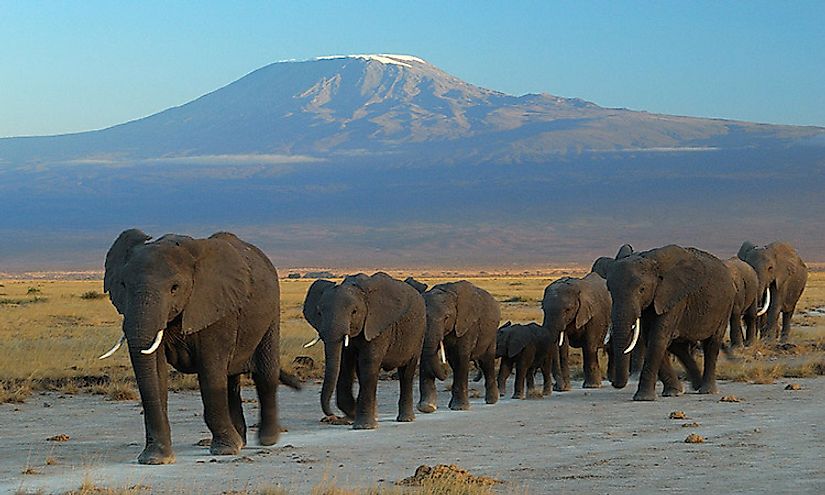UNESCO World Heritage Sites In Tanzania

UNESCO World Heritage Sites In Tanzania
Tanzania, officially known as the United Republic of Tanzania is the largest country in East Africa. Kenya and Uganda border Tanzania to the north, Rwanda, Democratic Republic of Congo, and Burundi borders the country to the west. The Indian Ocean lies to the east, Zambia, Malawi, and Mozambique lies to the south. Tanzania is the most populous country in East Africa, and Dodoma is its Capital city even though most government offices are located in Dar es Salaam. Tanzania was first colonized by the Germans before it was handed over to the British after the First World War. It is home to the Serengeti national reserve and the tallest mountain in the Africa, Mount Kilimanjaro.
Kilimanjaro National Park
Kilimanjaro National Park is located near the city of Moshi. It is 190 miles south of the equator and covers an area of approximately 653 square miles. Africa's tallest mountain Kilimanjaro is located within the park. Tanzania National Parks Authority is responsible for administering the park and collects about $51 million annually. The park is visited by about 58,000 foreigners annually. The park was established by the German colonial government after it declared Mount Kilimanjaro and the adjacent forest and savannah grassland as protected land. The park was declared a UNESCO world heritage site in 1987. The park is home to the Cape buffalo, the western black and white colobus, and elephants.
Serengeti National Park
The Serengeti National Park is located in the Mara region of Tanzania. The parks extend to the Kenyan side of the border where it is known as the Maasai Mara Game Reserve. The Serengeti is well-known for its annual migration of wild beasts and zebra. The Maasai community still grazes their livestock in the park even though both the Kenyan and Tanzanian governments are against it. The park was established in 1971, by the colonial government seeking to protect lions from being poached. Serengeti covers an area of approximately 5,700 square miles, and its vegetation is savanna grassland plains, riverine forest, and woodlands. The park is home to several animals including the big five and more than 1 million wild beasts. It is visited by over 90,000 tourists annually and generates millions of dollars in revenue.
The Stone Town Of Zanzibar
Stone town of Zanzibar, popularly known as Mji Mkongwe in Swahili is the oldest parts of Zanzibar city. It is located on the coast of Unguja which was the capital center of the Zanzibar Sultanate. The town is famous for being the transport hub of ivory trade, the slave trade, and spice trade. The stone town is prominent for its artistic architecture is the construction of houses dating back to the 19th century. The town exhibits the Swahili culture and the early contact between the East African coast, and the Arabs, Persians, and Europeans. The town was declared a UNESCO world heritage site in 2002. The town is famous for the Zanzibar revolution that advocated for the removal of the Sultan and left more than 20,000 dead.
UNESCO World Heritage Sites In Tanzania
| UNESCO World Heritage Sites In Tanzania | Year of Inscrpition |
| Kilimanjaro National Park | 1987 |
| Kilwa Kisiwani and Songo Mnara Ruins | 1981 |
| Kondoa Rock Art Sites | 2006 |
| Ngorongoro Conservation Area | 1979 |
| Selous Game Reserve (Site in Danger) | 1982 |
| Serengeti National Park | 1981 |
| Stone Town of Zanzibar | 2000 |











